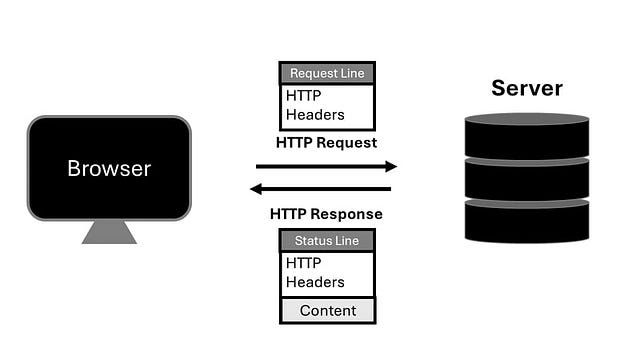In modern software development, RESTful APIs (REpresentational State Transfer Application Programming Interfaces) are one of the key pillars of connectivity.
They facilitate seamless communication between a wide range of systems, which enables the creation of more robust and interoperable applications.
Developers can integrate RESTful APIs into their applications to effortlessly share data and functionality between them.
This allows them to focus on innovation, rather than reinventing the wheel or attempting to match the refined standards already established by existing solutions.
In this article, we’ll highlight the essential concepts behind RESTful APIs, exploring their architecture, benefits, and best practices.
Whether you’re a seasoned developer or a beginner, mastering these fundamental concepts will unlock a world of possibilities in modern software development.
Understanding RESTful APIs
At the core of REST is a set of guidelines that dictate how APIs should be designed and implemented.
One of these principles is called statelessness, which emphasizes that each request from a client to the server must contain all the information necessary to understand and process the request.
This includes the endpoint URI (learn more here), the HTTP method, any headers, query parameters, authentication tokens, and session information.
By eliminating the need for the server to store session state between requests, statelessness enhances scalability and reliability, making RESTful APIs ideal for distributed systems.

Another core principle of REST architecture is the uniform interface, promoting simplicity and consistency in API design.
This includes several key concepts, such as resource identification through URIs (endpoints), the use of standard HTTP methods like GET, POST, PUT, and DELETE for CRUD operations, and the adoption of standard media types for representing resources.
This ease of understanding and interoperability across RESTful APIs enables developers to build scalable and flexible systems without having to learn new architectures each time.
Key Development Concepts
Let’s take a look at some of the fundamental concepts of RESTful API development, focusing on resource identification, HTTP methods, and status codes.
Resource Identification
Resources refer to any data or information that can be accessed via the API.
These resources can represent a wide range of entities, such as users, products, articles, or any other type of data that the API exposes.

Each resource is uniquely identified by a Uniform Resource Identifier (URI), which serves as its address or endpoint within the API.
Resource identification is the process of assigning a URI to each resource to enable clients to access and manipulate them.
URIs follow a hierarchical structure, typically organized into paths that reflect the logical structure of the API’s data model.
For example, a URI might look like ‘api.example.com/users/123’ , where ‘/users’ is the resource collection (or endpoint) and ‘123’ is the unique identifier of a specific user resource.
By assigning meaningful URIs to resources, developers can create a logical hierarchy that reflects the relationships between different entities in the system.
This allows clients to navigate and manipulate resources using familiar HTTP methods such as GET, POST, PUT, and DELETE, leading to a more intuitive and user-friendly API experience.
HTTP Methods
HTTP methods, also known as verbs, define the actions that clients can perform on resources.

The most commonly used HTTP methods in RESTful API interactions include:
GET: Retrieves data from a resource.
POST: Creates a new resource.
PUT: Updates an existing resource or creates a new one if it doesn’t exist.
DELETE: Removes a resource.
Additionally, other HTTP methods such as PATCH for partial updates and OPTIONS for retrieving communication options are also utilized.
These methods enable clients to perform various CRUD operations on resources, providing a standardized and predictable way to interact with the API.
Status Codes for RESTful APIs
HTTP status codes are three-digit numbers returned by the server to indicate the success or failure of a client’s request.
Understanding these status codes is crucial for effective error handling and troubleshooting during API interactions.

Some common HTTP status codes include:
200 OK: Request succeeded.
201 Created: Resource created successfully.
404 Not Found: Resource not found.
400 Bad Request: Invalid request syntax.
500 Internal Server Error: Server encountered an unexpected condition.
To learn more about API error handling, check out our previous article here.
Best Practices

Designing Resource Endpoints:
Choose descriptive and intuitive URIs that reflect the hierarchy and relationships between resources. For example, use /users to represent a collection of user resources and /users/{id} to represent a specific user.
Follow the RESTful principles by using HTTP methods (GET, POST, PUT, DELETE) to perform CRUD (Create, Read, Update, Delete) operations on resources. Ensure that each method corresponds to a specific action on the resource.
Handling Authentication and Authorization:
Use techniques such as JSON Web Tokens (JWT) or OAuth 2.0 to authenticate users and secure API endpoints. Tokens provide a secure and stateless way to validate user identity and permissions.
If your API allows third-party access, consider implementing OAuth 2.0 to delegate authentication and authorization responsibilities to trusted identity providers.
Managing State:
Design your API to be stateless, meaning that each request from a client contains all the necessary information for the server to process it. Avoid storing session state on the server to improve scalability and reliability.
Instead of relying on server-side sessions, use tokens (e.g., JWT) to encapsulate user identity and session information. Tokens can be securely transmitted between the client and server, allowing stateless communication while maintaining session context.
Documenting APIs:
- Document each endpoint, including its purpose, expected input parameters, and output format. Provide examples and usage scenarios to assist developers in understanding how to interact with the API effectively.
Versioning APIs:
- As APIs evolve, it’s essential to maintain backward compatibility to prevent breaking existing integrations. Use versioning schemes (e.g., URI versioning, custom headers) to manage changes and allow clients to specify the desired API version.
Testing and Debugging:
Test each endpoint under various scenarios to ensure functionality, reliability, and security. Use tools such as Postman or Swagger for automated API testing and validation.
Log API interactions and errors to facilitate troubleshooting and debugging. Provide meaningful error messages and status codes to guide developers in diagnosing and resolving issues effectively.
RESTful API Integration
RESTful API integration allows developers to leverage the functionalities of external APIs to enhance the capabilities of their applications.
This includes accessing external data sources, performing specific operations, or integrating with third-party services.
Autonomous agents play a crucial role in optimizing the RESTful API integration process by streamlining various tasks.
These agents are capable of automating tasks such as data transformation, error handling, and performance optimization, thereby reducing the manual effort required and improving overall efficiency.

In terms of data transformation, autonomous agents excel at converting data formats, mapping data between different schemas, and ensuring data consistency and integrity throughout the integration process.
This automation frees up developers from tedious manual data manipulation tasks, allowing them to focus on more strategic aspects of development.
Learn more about data transformations in API integrations from our previous article here.
Additionally, autonomous agents enhance error handling by proactively monitoring API interactions in real-time, detecting errors, and initiating appropriate error resolution mechanisms.
By promptly addressing errors, these agents minimize downtime and ensure the reliability and stability of integrated systems.
Furthermore, autonomous agents contribute to performance optimization by analysing patterns in API usage, optimizing API calls, and dynamically adjusting integration strategies to maximize performance.
You can learn more about how autonomous agents redefine API integration by checking out our previous article here.
Conclusion
We’ve explored the fundamental concepts of RESTful APIs, highlighting their significance in modern software development.
Autonomous agents play a pivotal role in simplifying API integration workflows by automating tasks like data transformation and error handling.
By leveraging these tools, developers can enhance productivity and build more efficient systems.
Explore the power of autonomous agent technology by requesting a FREE demo of APIDNA’s new API integration platform by clicking here.
For further learning, delve into our recommended further reading below to deepen your understanding of RESTful APIs.

